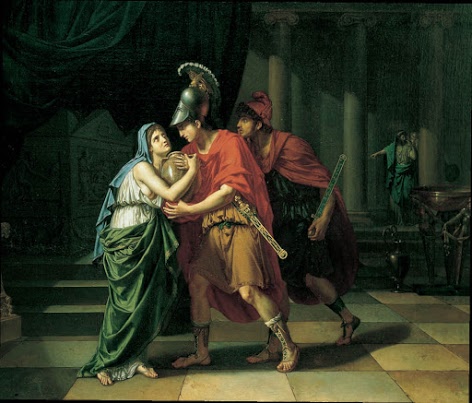Electra
The tragic princess, daughter of Agamemnon and sister of Orestes, who sought revenge for her father's murder.

In Greek mythology, Electra was the daughter of Agamemnon, the king of Mycenae, and Clytemnestra. Several years after the murder of her father by her mother, Electra and her brother avenged his death.
Homer (9th-8th century BCE) does not mention Electra as a heroine or one of Agamemnon's daughters. However, Electra makes her first dramatic appearance in the fifth century BCE in Aeschylus's tragedy "The Libation Bearers," which is the second part of the trilogy "Oresteia." From then on, Electra's story has been presented in many variations, with the central plot remaining the same.
Electra was one of the four children born to Agamemnon of Mycenae and his wife, Clytemnestra. Besides Electra, they had a son, Orestes, and two more daughters, Iphigenia and Chrysothemis. Electra's myth begins during the Trojan War. When Helen, the wife of King Menelaus of Sparta and sister of Clytemnestra, was abducted to Troy by Prince Paris, the Greeks decided to launch a campaign against Troy to bring her back. Agamemnon, Menelaus's brother, was chosen as the leader of the Greek forces.
Before the Greeks set sail for Troy, a seer urged Agamemnon to sacrifice his daughter, Iphigenia, to the goddess Artemis to secure favorable winds for the fleet. Although Artemis ultimately spared the girl's life, the sacrifice took place, and the Greek fleet departed for Troy. Clytemnestra, who was plunged into grief over the loss of Iphigenia, never forgave her husband. During Agamemnon's absence in Troy, Clytemnestra and Agamemnon's cousin, Aegisthus, became lovers. However, Electra remained loyal to her father and longed for his return.

After ten years of war between the Greeks (Achaeans) and the Trojans, Troy finally fell, and Agamemnon returned victorious to Mycenae, but he did not return alone. As a war captive, he brought with him Cassandra, the daughter of King Priam of Troy. A few hours after their arrival at the palace, according to some versions of the myth, Clytemnestra and Aegisthus murdered Agamemnon and Cassandra. Clytemnestra then planned to kill Orestes, but Electra secretly took her young brother to the kingdom of Phocis, where he was raised and grew up safely.
After many years, Electra lived in sorrow for her father's death and vowed to seek revenge. When Orestes reached adulthood, he learned about how his father was killed and set out with his friend and cousin, Pylades, to Mycenae. When they arrived at the palace, they decided to disguise themselves as travelers to avoid being recognized. They claimed to bring the ashes of the deceased Orestes in an urn.
According to some versions of the myth, Electra had decided to kill Clytemnestra and Aegisthus herself as soon as she saw them. However, before she could carry out her plan, Orestes and Pylades revealed their true identities and joined her in executing the crime. First, Orestes stabbed Clytemnestra, with Electra either encouraging him or perhaps even assisting with a second stab to complete the act. They then presented Clytemnestra's body to Aegisthus before killing him as well. In another version of the myth, Orestes and Pylades first killed Aegisthus before stabbing Clytemnestra to death.

Orestes rewarded Pylades for his help by marrying him to Electra. After their marriage, Electra and Pylades moved to Phocis, where they had two sons, Medon and Strophius.
The ancient Greeks valued the ideals of loyalty and justice, and Electra emerged as a heroine notable for her devotion to her father and her determination to avenge his unjust death. In ancient Greek society, women were expected to be loyal and obedient to men, and Electra displayed the faithfulness and patience that her mother perhaps should have shown. We can describe Electra as an example of the passive role of women in ancient Greece. Despite her intense emotions, in some versions of the myth, she was limited to few actions, trusting her brother to take revenge on her behalf.